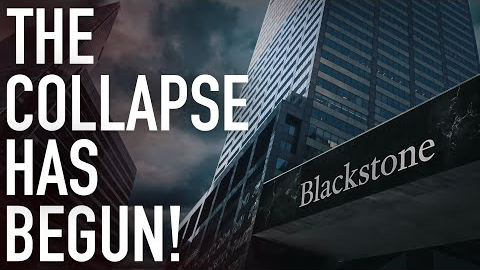Commercial Real Estate Is Headed For A Crash Worse Than 2008 As Mortgage Rates Explode
57,378 View
Share this Video
- Publish Date:
- June 7, 2023
- Category:
- Commercial Real Estate
- Video License
- Standard License
- Imported From:
- Youtube
Tags

A commercial real estate crash worse than 2008 is now looming in the United States. That’s the warning of Bank of America, JP Morgan, Goldman Sachs, Morgan Stanley, Blackrock, and a number of respected financial analysts who came forward this week to inform the public and several U.S. businesses about the growing risks spreading across the sector. In recent years, commercial real estate was already in huge trouble due to rising vacancy rates, soaring interest rates, declining property values, and monumental piles of debt. The ongoing banking crisis has shifted the outlook from worrying to downright horrifying as lenders start to see cases of debt default and delinquency ballooning all across the country. Today, we reveal the details of this alarming crisis and the impact it will have on the lives of everyday Americans, U.S. companies, and the overall economy.
With U.S. banks at risk of experiencing cascading systemic failures, beleaguered banks are getting far more aggressive with lending arrangements, giving commercial real estate landlords even less room to breathe as they try to refinance a mountain of loans coming due. Earlier this month, Goldman Sachs said in an analysts’ note: “The recent stress in the banking sector has fuelled growing concern about spillover effects on the commercial real estate industry.” Meanwhile, Bank of America pulled over $450 million from real estate stocks shortly after the Silicon Valley Bank crash, warning that “commercial real estate would be the next shoe to drop.”
This week, Morgan Stanley shared a very detailed report on why the sector is vulnerable to a collapse even bigger than what was seen during the Global Financial Crisis. According to the bank’s chief investment officer, Lisa Shalett, office, and retail property valuations could plummet by an additional 40% this year on top of the losses recorded in the past couple of years. The executive explained that over 50% of the $2.9 trillion in commercial mortgages will need to be renegotiated in the next 24 months “when new lending rates are likely to be up by 350 to 450 basis points." This year alone, roughly $270 billion in commercial mortgages held by banks are set to expire, according to data released by Trepp. “These kinds of challenges can hurt not only the real estate industry but also entire business communities related to it,” stresses Shalett.
At the moment, more than 80% of all commercial real estate loans are now held by banks with fewer than $250 billion in assets, the economists revealed. These loans now comprise the highest percentage of industry loan portfolios in 13 years. Given that smaller institutions are the most likely to face systemic failures, these banks will have no other choice but to significantly raise their lending standards to reduce the financial risk on their end, consequently causing an industrywide credit crunch.
"Storm clouds are absolutely building," says Mark Grinis, EY Americas Real Estate, Hospitality & Construction leader. His firm reports that since 2021, office loan delinquencies rose by 44% while the number of loans in special servicing rose by 55%. On top of that, today, the U.S. office vacancy rate is standing at 12.5%, comparable to where it was in 2010, one year out from the Global Financial Crisis, and office sales volume is now approaching its post-GFC lows.
All of this indicates that the U.S. financial sector is in shambles. With banking institutions becoming even more conservative when it comes to lending, not only big landlords but also U.S. businesses and consumers will have less access to borrowing, which can in turn, further decelerate the economy and throw us into something much more serious than a recession.















